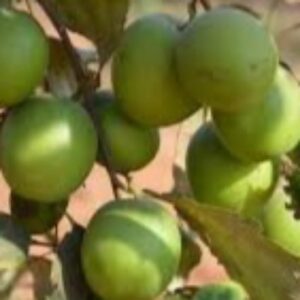- Empty cart.
- Continue Shopping
Ice Creame Red Bean (Monkey Tamarind)
Original price was: ₹570.00.₹480.00Current price is: ₹480.00.
Genus : Ing
“The Ice Cream Red Bean Fruit Plant is a fascinating addition to any garden. It bears red bean fruits with a creamy texture that resembles ice cream. Enjoy the unique flavors and beauty of this plant.”
Monkey Tamarind, also known as Pithecellobium dulce, is a tropical fruit tree native to Mexico and Central America, but is now commonly found in other parts of the world including the Caribbean, India, and the Philippines. It is a fast-growing tree that can reach up to 30 meters in height, with a spreading canopy and smooth gray bark.
The fruit of the Monkey Tamarind is a pod-shaped legume that is usually around 10-20 cm long and 2-3 cm wide. The pod is covered with a tough, leathery skin that turns from green to brown as the fruit matures. When fully ripe, the skin can be easily peeled off to reveal a sweet, fibrous pulp that surrounds the seeds. The pulp has a tangy, slightly sour taste and is often used in jams, jellies, and chutneys, or eaten fresh as a snack.
In addition to its culinary uses, the Monkey Tamarind has a long history of use in traditional medicine. The bark, leaves, and roots of the tree have been used to treat a variety of ailments, including diabetes, hypertension, and skin infections. The leaves are also used as a natural pesticide, and the wood is used in construction and furniture making. Overall, the Monkey Tamarind is a versatile and valuable tree that is appreciated for both its fruit and its medicinal properties.














Reviews
There are no reviews yet.